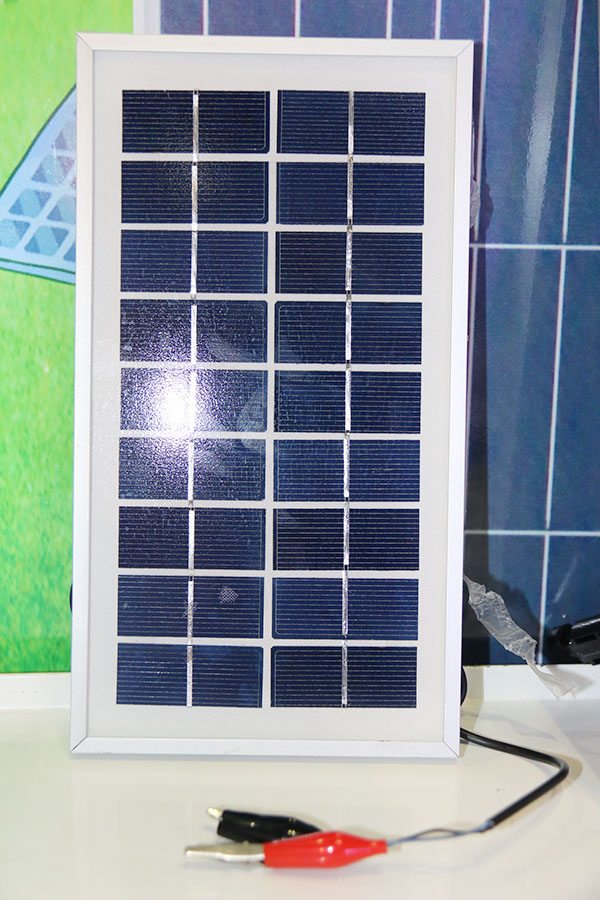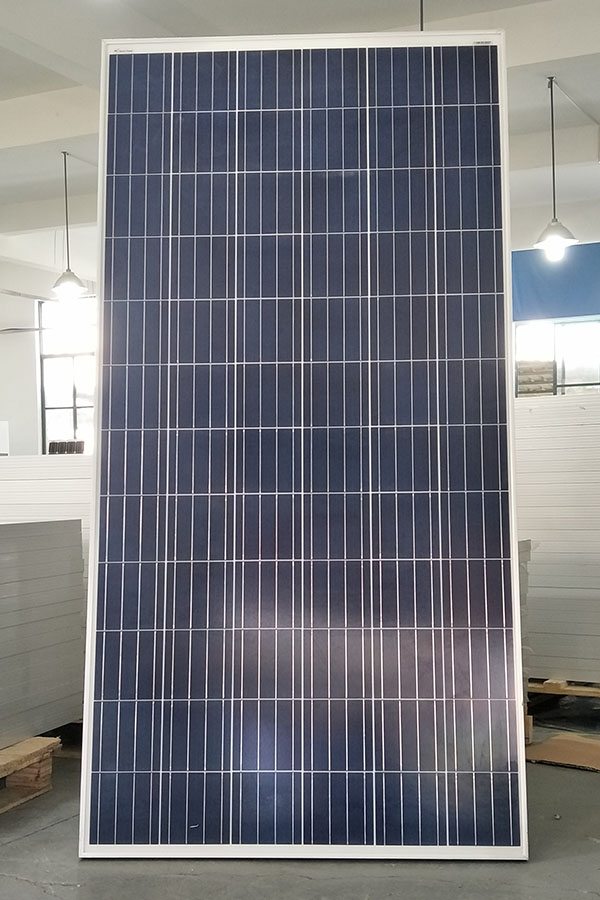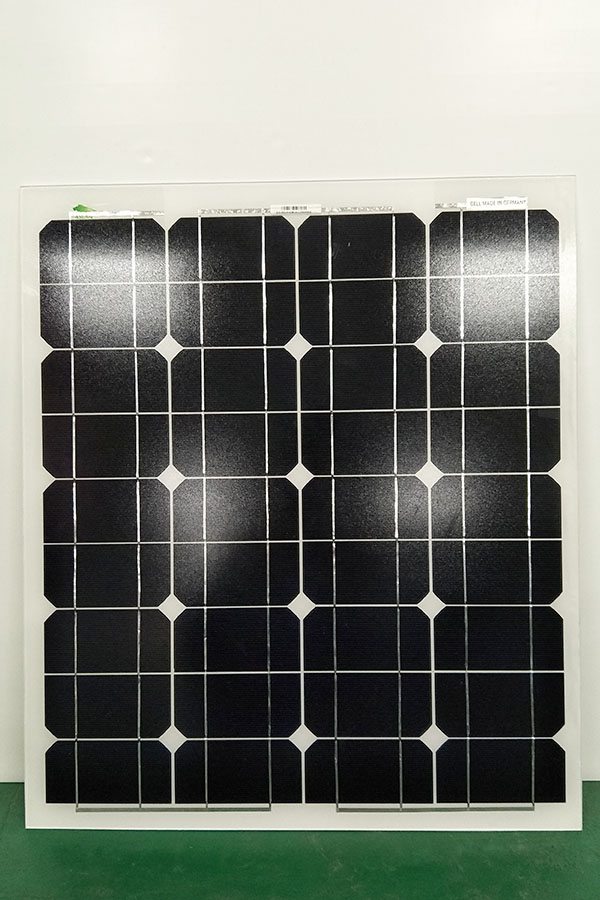21 Years Factory Poly-crystalline Solar Panel 3W Supply to Asia
Short Description:
With a sound business credit, excellent after-sales service and modern manufacturing facilities, we have earned an excellent reputation among our customers across the world for 21 Years Factory Poly-crystalline Solar Panel 3W Supply to Asia, We welcome new and old customers to contact us by phone or send us inquiries by mail for future business relationships and achieving mutual success.
Poly-crystalline Solar Panel 3W
Technical parameter
Maximum Power(W) 3W
Optimum Power Voltage(Vmp) 9V
Optimum Operating Current(Imp) 0.34A
Open Circuit Voltage(Voc) 10.8V
Short Circuit Current(Isc) 0.37A
Mechanical Characteristics
Cell Type Polycrystalline
No of Cell 18 (2x9pcs)
Dimensions 145x245x18mm
Weight 0.52KGS
Front Glass 3.2mm,High Transmission, Low Iron,Tempered Glass
Temperature and Coefficients
Operating Temperature(°C): -40°C ~ + 85°C
Maximum System Voltage: 600V(UL)/1000V(IEC) DC
Maximum Rated Current Series: 10A
Temperature Coefficients of Pmax: -0.435%
Temperature Coefficients of Voc: -0.35%
Temperature Coefficients of Isc: 0.043%
Nominal Operationg Cell Temperature (NOCT): 47+/-2°C
Materials of solar panel
1).Solar Cell——Polycrystalline solar cell 156*156mm
2).Front Glass——-3.2mm, high transmission, low iron, tempered glass
3).EVA——-excellent anti-aging EVA
4).TPT——-TPT hot seal made of flame resistance
5).Frame——anodized aluminum profile
6).Junction Box——-IP65 rated, high quality, with diode protection
Superiority: high quality anodized aluminum frame, high efficiency long life, easy installation, strong wind resistance, strong hail resistance.
Features
1. High cell efficiency with quality silicon materials for long term output stability
2. Strictly quality control ensure the stability and reliability, totally 23 QC procedures
3. High transmittance low iron tempered glass with enhanced stiffness and impact resistance
4. Both Poly-crystalline and Mono-crystalline
5. Excellent performance in harsh weather
6. Outstanding electrical performance under high temperature and low irradiance
Quality assurance testing
Thermal cycling test
Thermal shock test
Thermal/Freezing and high humidity cycling test
Electrical isolation test
Hail impact test
Mechanical, wind and twist loading test
Salt mist test
Light and water-exposure test
Moist carbon dioxide/sulphur dioxide
3 FACILE Special Pergola System ”COPERTURA FISSA” è un pergolato in alluminio composto interamente dagli stessi 3 elementi strutturali che compongono la struttura portante di base della Pergola Apri&Chiudi.
La semplicità della struttura permette di adattare la pergola a qualsiasi contesto, in quanto è possibile inclinare la copertura fino a 20°, variare la distanza tra i travetti e la profondità della parte a sbalzo dei travetti inclinati fino ad un metro.
La copertura superiore è opzionale e potrà essere realizzata con teli spalmati in PVC ignifugo di diverse tipologie: standard, oscurante, retinato, così pure in PVC “Cristal” trasparente.
3 Facile permette l’installazione di un doppio telo ottenendo una copertura isolante sia dall’irradiazione solare che dall’umidità evitando l’effetto condensa dei mesi invernali.
3 Facile può trasformarsi in un elegante pergolato fotovoltaico in quanto permette l’installazione di pannelli solari di qualsiasi tipo; oltre a ciò può essere essere un ottimo supporto per pannelli rigidi di copertura, quali policarbonato alveolare, vetro e pannelli sandwich.
Pergola 3 Facile potrà essere corredata in tutte le versioni di chiusure perimetrali di diverse tipologie: pareti finestrate o cieche in PVC scorrevoli, oppure infissi in alluminio e vetro per garantire una chiusura ermetica.
—————————————————————————————————————————-
https://www.giuliobarbieri.it/it/prodotti-outdoor/ombreggianti-pergole-pergolati/pergola-veranda-giardino-d-inverno-copertura-terrazzo_3-facile
INFO: info@giuliobarbieri.it
Giulio Barbieri S.p.A.
Via Ferrara, 41 – 44028 Poggio Renatico (Fe) – Italy
Tel. (+39) 0532 82.15.11 – Fax (+39) 0532 82.15.55
“The sun provides more than enough energy in just one hour to supply our planet’s energy needs for an entire year. Your home can capture this free, abundant energy source through rooftop solar tiles, turning sunlight into electricity for immediate use or storage in a Powerwall battery.”- Instead of talking about rocket trips to Mars or self-driving cars, Tesla Motors CEO Elon Musk turned his attention Friday night to a more mundane topic.
He came to talk about roofs. But like all things Musk, there was nothing normal about the roofs he came to discuss.
On Wisteria Lane, the backlot set of what used to be the Desperate Housewives TV series at Universal Studios Hollywood, Musk showed off a new kind of solar roof that will be offered starting next year through SolarCity, the home solar installation company that he is seeking to merge into Tesla.
Instead of a massive, unattractive array of solar panels typically seen in suburbia, SolarCity had installed roof tiles that are solar collector themselves on several of the houses that are part of the film set. Whether meant to emulate clay tiles on a Spanish-style house or shingles on a colonial, Musk says they have 98% of the ray-collecting power of a conventional solar panel, are durable and will last longer than the house itself.
Besides being CEO of both electric car maker Tesla and rocket company SpaceX, Musk is chairman of SolarCity: It’s run by his cousin and CEO, Lyndon Rive.
The splashy event, in which Musk held forth from a stage and talked about the roof installations on the houses around him, not only promoted roofs, but indirectly, Tesla’s proposal to acquire SolarCity. The proposal is scheduled to go before both companies’ shareholders, but was met with skepticism by some analysts.
Talking to reporters after the event, Musk said Tesla-SolarCity vision of the future is “very unwieldy if we’re not a combined company.”
SolarCity sees the tiles and solar roofs as a huge growth driver that also would help separate it from other solar installers. The company believes it might be able to capture as much as 5% of the nation’s roofing business in a few years.
Solar roofs are a key component of what Musk sees as a home power triad — rooftop solar that collects the sun’s rays during the day and stores energy in Tesla’s Powerwall home battery system. The power is discharged in the evenings, not only to power the home but to recharge an electric car in the garage like Tesla’s Models S, X or the coming Model 3.
“Solar and batteries go together like peanut butter and jelly,” Musk said.




